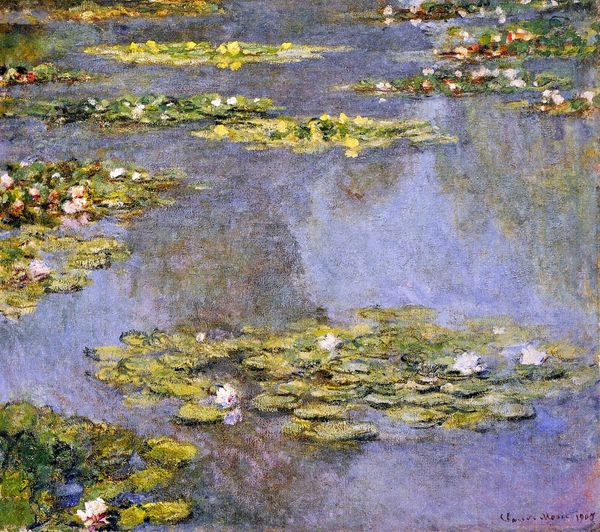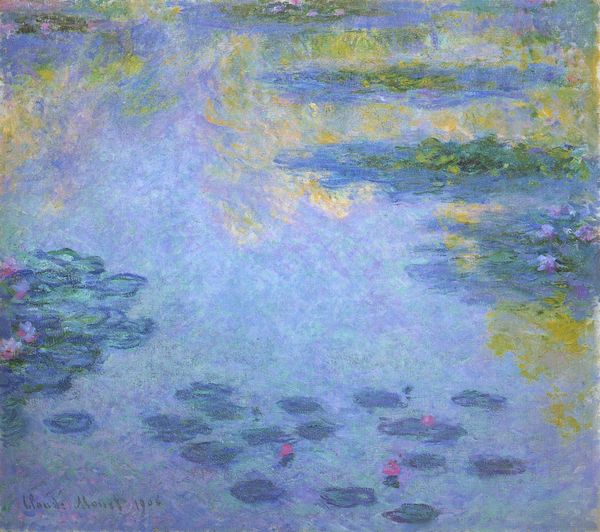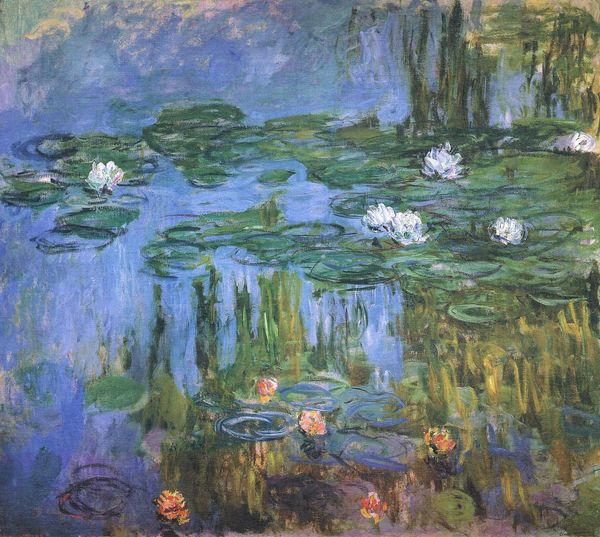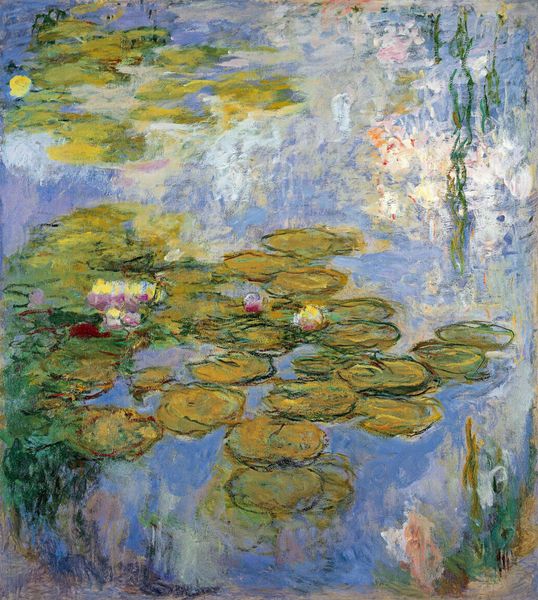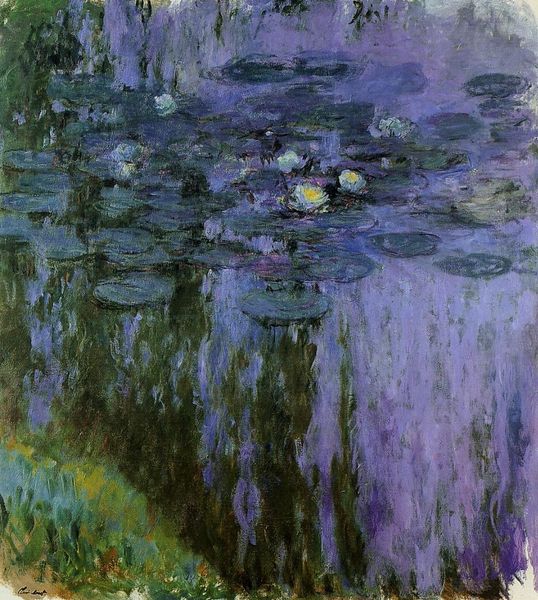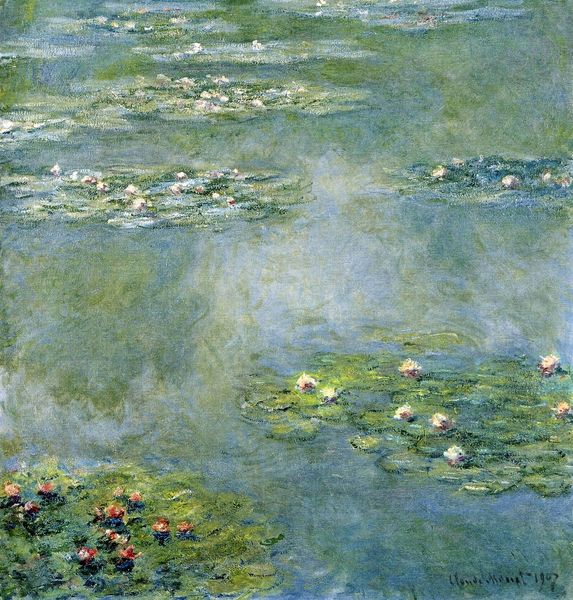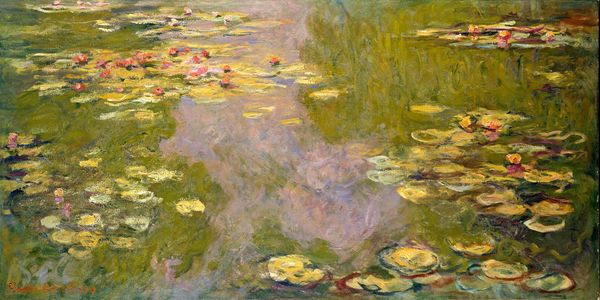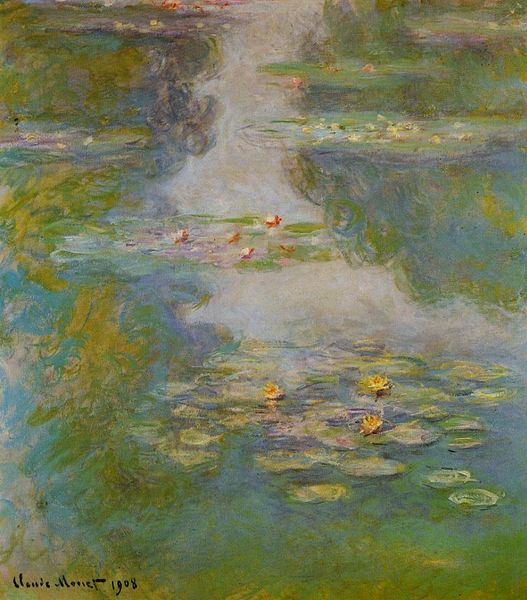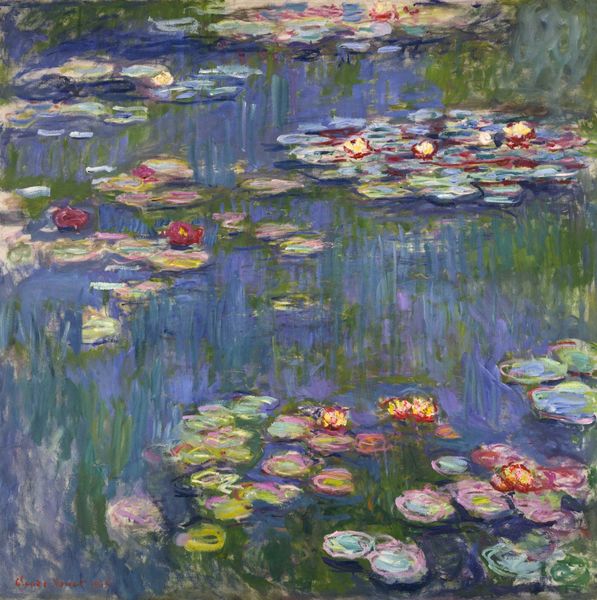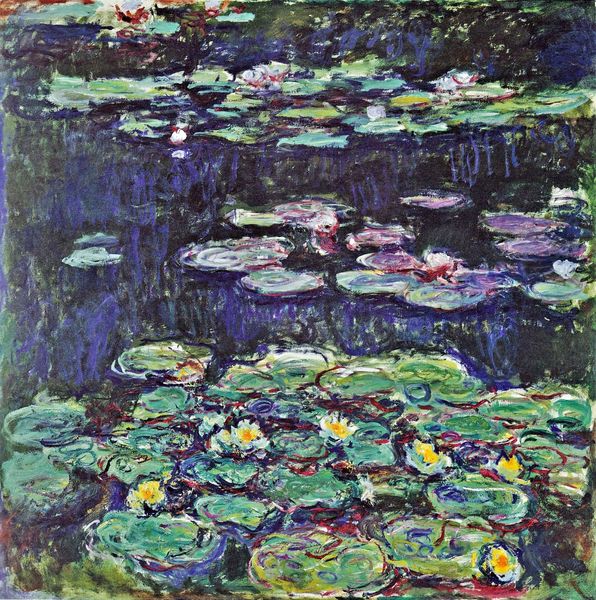
Copyright: Public domain
Curator: This painting, created in 1908, is one of Claude Monet's "Water Lilies" using oil on canvas. What strikes you first? Editor: The color, absolutely. That pervasive violet hue. It lends a kind of dreamlike quality to the scene, a quiet stillness. Curator: It’s fascinating how Monet uses these commonplace aquatic plants, as well as his direct observation of light, to almost democratize high art at the time. The imagery pulls from everyday life. Editor: The water lilies themselves carry such a potent symbolic weight. Across cultures, the lotus, often used interchangeably, symbolizes purity, rebirth, and enlightenment, and of course creation. Doesn't that gentle pink nod towards dawn? Curator: It's true, in many ways Monet's lily pond paintings can be viewed through that lens. He acquired the land at Giverny in 1893 and the pond and the garden become a world unto itself, but he was criticized, often. The symbol of the water lily wasn't so sacred in the urban discourse of the era. They called it bourgeois, insular... even decadent. Editor: Even with such critique, the emotional and psychological draw remains powerful, and you can consider what the Impressionists, like Monet, gave to our collective consciousness about the subjective experience of color. I imagine these delicate blooms mirroring larger aspirations. Curator: The scale is important, too. Remember these canvases got quite large later on, becoming almost environments. He worked en plein air, too, observing directly the effects of light and atmosphere upon the water's surface. The political intent in depicting that transience feels lost sometimes, however. It's all about his garden to most viewers today. Editor: Perhaps that democratization succeeds? The symbolism isn't restricted by context; the blooms stand on their own. It gives everyone the space to discover the sense of serenity within themselves that Monet clearly also found in his garden. Curator: I’m reminded of the changing perception of Japanese prints on Impressionism that also allowed artists to divorce their symbolism. A lot to contemplate with this particular lily pond.
Comments
No comments
Be the first to comment and join the conversation on the ultimate creative platform.
